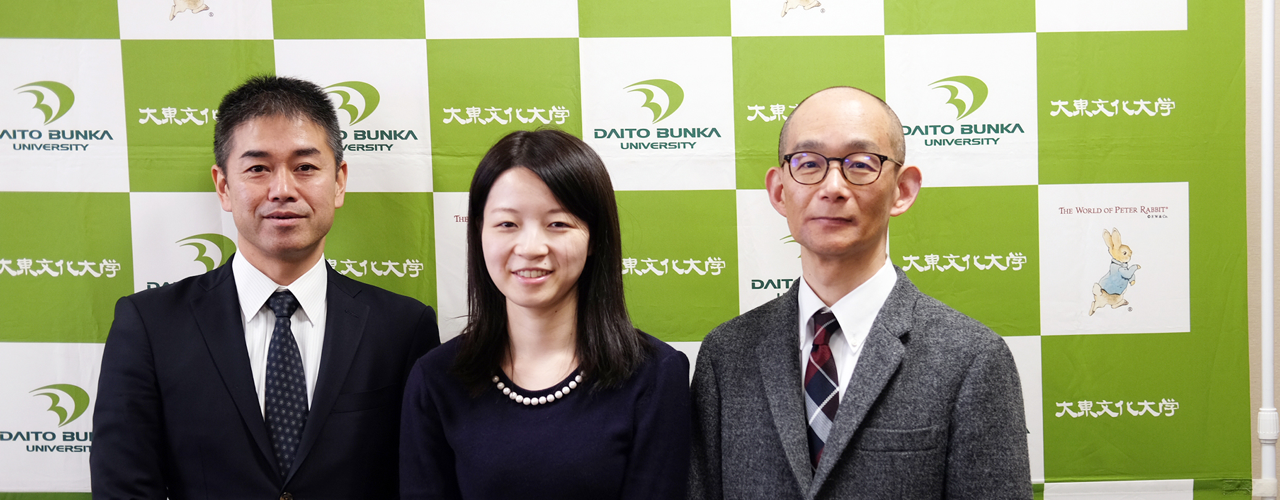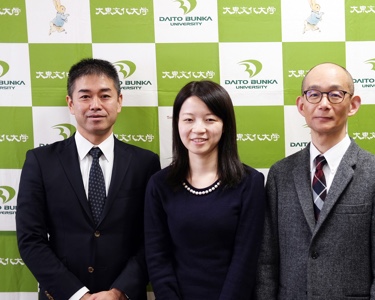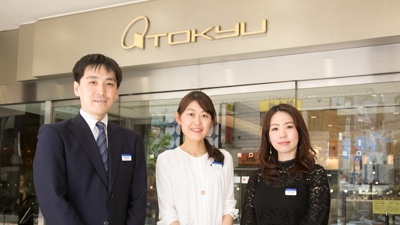Please tell us about your business, roles, and responsibilities
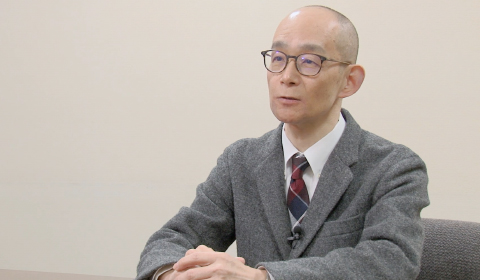
Mr. Umezawa :
Under the mission of “seeking the blossoming of new culture by promoting the convergence of Eastern and Western cultures,” Daito Bunka Institute operates three schools: Daito Bunka University, Daito Bunka University Daiichi High School, and Daito Bunka University Aogiri Kindergarten. As an Executive Director, Secretary General and Planning Director, I assist the chairman of the board and I am in charge of general management and operation of the institute, including corporate decision-making procedures, financial and office organizations, human resources affairs etc.
As the Chief of Staff in the Institute’s General Information Center Office, I am in charge of information systems including network, server, backbone network and client PC, and I also take care of adoption of IT devices, maintenance, and operation management.
Ms. Maekawa:
In the Faculty Course Center located in Daito Bunka University, we support acquirement of teacher’s licenses and finding career paths as a teacher. As a member of the center, I am in charge of gathering and delivering information related to job and volunteer opportunities in schools for students who wish to become teachers.
Tell us more about some of the problems you had before using LINE WORKS, and what has led you to adopt the service
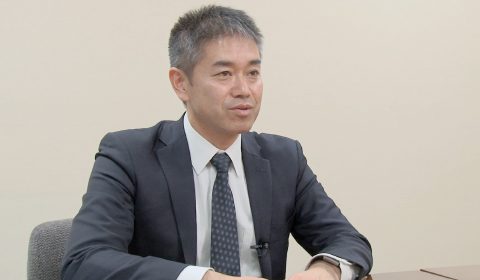
Mr. Watanebe :
PCs used by office workers who handle students’ personal information can only be accessed through intranet for safety purposes, and in principle, taking them outside of school is prohibited. Nevertheless, this factor has been impeding work efficiency, and we felt the need to create an environment where information can be accessed from the outside, and promote communication among employees.
Ms. Maekawa :
For students who aim to become teachers, we post information about teacher recruitment in the school portal and also on the bulletin board. However, as it is difficult to catch students’ attention with the bulletin board in the faculty course center, we were searching for an alternative means to share information that could substitute the paper notices, which were quite cumbersome to make and replace.
Mr. Watanabe :
After comparing and reviewing various tools, we came to notice LINE WORKS, which has the same interface with LINE many young employees use. We decided to introduce the service because there was no special training needed before the introduction, and because operating and managing the service didn’t seem burdensome.
Did the school establish any special operating rules when introducing LINE WORKS?

Mr. Watanabe :
We made a regulation prohibiting employees from describing information related to students’ personal information, and informed the employees through orientations, LINE WORKS’ ‘Home,’ school intranet and etc. But we tried to stay away from unduly detailed regulations as much as possible, in order to bring about the active use of LINE WORKS.
Moreover, this coincided with the time when we provided iPads to all employees to pursue paperless work environment, so we kitted and distributed the LINE WORKS app.
For office workers who were not provided with iPads, we allowed using LINE WORKS through personal devices like mobile phones. But since we also ban taking iPads outside of school in principle, we allowed BYOD (Bring your own device) for all employees, creating an environment where information and work-related contacts can be shared, regardless of time and place.
Tell us more in detail about how LINE WORKS is being used, and the effects made after
Mr. Umezawa :
Prior to the implementation of the “Work Style Reform Act,” we organized employees into groups so that they could voluntarily start projects on how to change the way they work. About 70 out of 200 employees took part in the project, even though it was a voluntary activity outside of working hours. There were also many people who wanted to know about the project’s progress but could not participate, so for them I uploaded a video explaining the project’s guidelines in the LINE WORKS message room as a kickoff. Afterwards, we conducted a survey with LINE WORKS’ ‘Form’ (which has just been introduced) on pending issues, and we could collect so many responses compared to the surveys conducted in the past. Based on the responses, we established six subcommittees, and they are utilizing LINE WORKS along with discussions and face-to-face meetings.
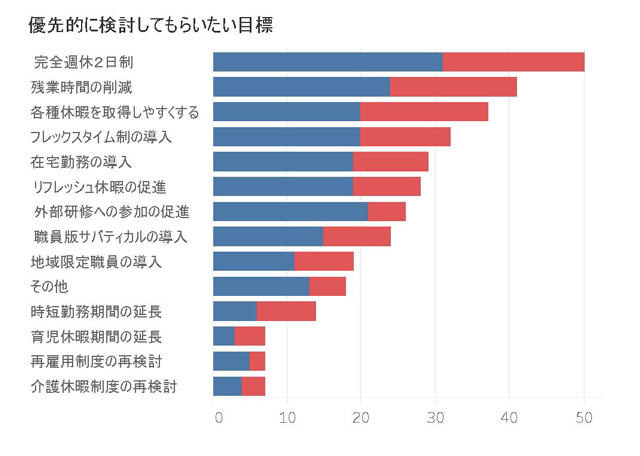
It wasn’t easy for employees to participate in the existing project while juggling with daily work, but LINE WORKS has enabled them to exchange ideas anywhere, anytime—message rooms almost serve the role of group study rooms. Although young employees find it quite challenging to speak out in a typical face-to-face meeting, ‘Message Room’ enables everyone to participate in the discussion regardless of age or rank, and also to check previous conversations and review the flow of discussions. I think this is a big strength of LINE WORKS. Although these groups are a place for voluntary learning for employees, without particularly aiming to make proposals to reform policies, we plan to combine the results achieved in each subcommittee and use them as a reference for establishing policies to change the way we work.
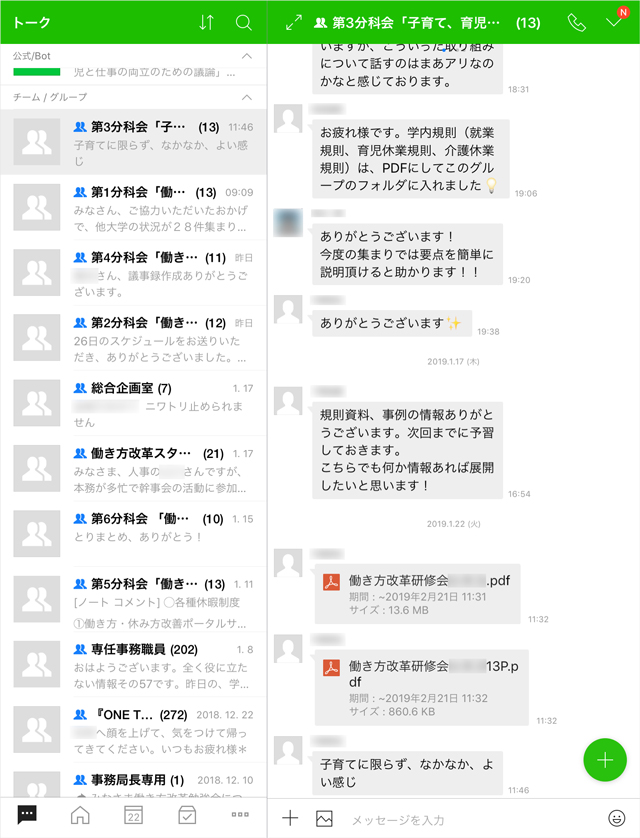
Tell us about how both Institute’s General Information Center and Faculty Course Center are utilizing LINE WORKS
Mr. Watanabe :
The Institute’s General Information Center frequently gets inquiries from other departments regarding the backbone network and client PC. After adopting LINE WORKS, we get most of the inquiries through LINE WORKS, not calls. When we received calls, we often had to stop what we were doing to respond to the inquiry right away; but when we receive them through message rooms, we can judge whether we can respond when we have time, so there is less psychological burden for response.
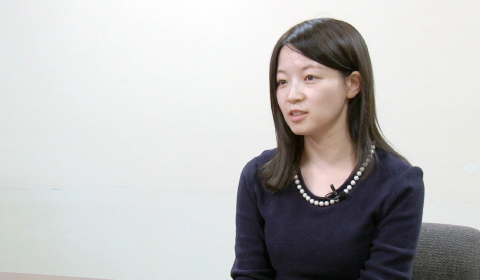
Ms. Maekawa :
I consulted Watanabe from the Institute’s General Information Center about how we can efficiently deliver information related to teachers’ recruitment. He recommended creating the center’s LINE WORKS account and sending information to students’ LINE accounts just like [LINE@.] Based on his counseling, we built an environment where we can connect with students’ LINE accounts through external conversations, and send information about recruitment and volunteer opportunities in message rooms through PDF files.
After recruiting applicants who had wished to receive a LINE alarm among students, most of the students who had completed the teacher training course have registered. Students can additionally fill in information about name, student ID, major, and the kind of local government or school (elementary·middle·high) they wish to apply for through tags; based on this information we use the ‘search’ feature in message rooms to search for tags, and send information customized for each student.
Of course, there are students who do not use LINE, so we still post information on the portal as well—but we no longer need to worry about the burden of replacing paper notices on the school bulletin board. When we send information through LINE WORKS, students either reply very fast or we can see the ‘read’ indication, so we can actually feel that the information is actually being delivered to the students.
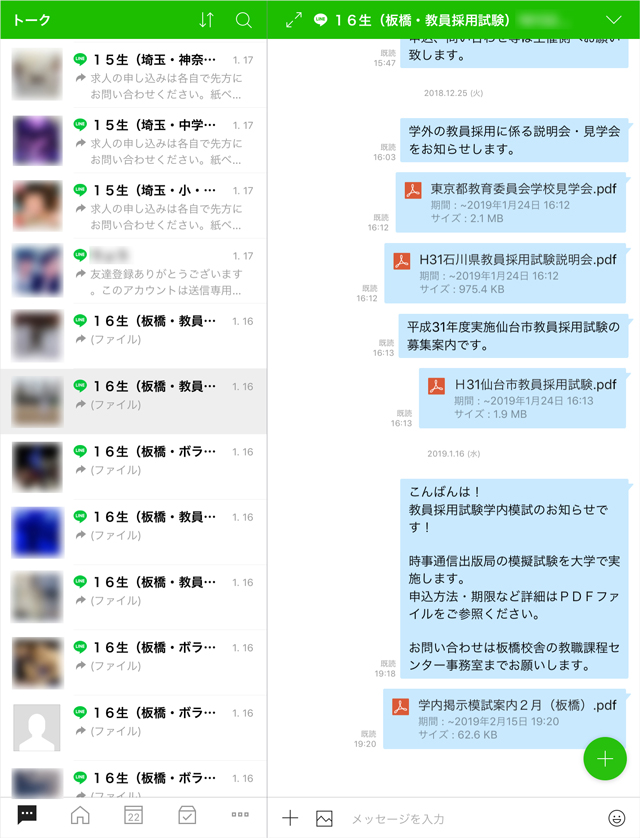
How would you like to utilize LINE WORKS to further boost schoolwork efficiency in the future?
Mr. Umezawa :
I realized that we can build an environment where it is easy for many people to take part through the use of communication tools. As it is easy for a university to turn into a vertical organization, it is crucial that we strengthen horizontal connections between departments and collect opinions to solve this problem. I would like to continue to utilize LINE WORK’s various features for this mission.
Mr. Watanabe :
Daito Bunka University is located in both Tokyo and Saitama, so we are considering conferences to connect the two campuses through voice and video calls.
Ms. Maekawa :
As there is a lot of teacher recruitment information concerning graduates in the Faculty Course Center, we are considering supporting graduates (along with undergraduates) by delivering information to them as well.
※All details, affiliations, and positions specified were gathered at the time of interview.
